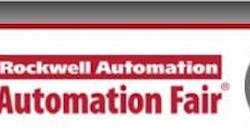Can software erect the steel and pour the concrete to build a new wastewater treatment plant or revamp an old one? Can it turn the motors, drive the pumps, power the blowers and directly run all the equipment required to operate that plant? The answer to both questions is no, but software can sure help, and indirectly enable users to achieve all these and other industrial goals.
For example, the City of Ann Arbor, Michigan, Wastewater Treatment Plant (WWTP) is four years into a phased, five-year project to renovate and expand its 30-million gallons per day (mgd) capacity facility, which has two main sections, including its old, 9.5-mgd west plant built during 1936-64, and its newer, 20-mgd east plant built around 1977. WWTP serves about 130,000 residents in Ann Arbor and parts of surrounding Ann Arbor, Pittsfield and Scio townships. Average daily processing is about 18 mgd, and the plant runs 24x7.
"In this latest project we had to replace a lot of old and obsolete equipment, and we also needed a new aeration system that required blowers and variable frequency drives (VFDs)," said Earl Kenzie, manager of WWT services, City of Ann Arbor Water Utilities. "We'd added new computerized controls in the mid-1990s, such as Allen-Bradley PLC5s and HMIs. As a result, when we chose to standardize on one manufacturer, we selected Rockwell Automation again because of our past experience and its cost efficiencies.
"PlantPAx lets our operators view profiles for several processes at once, and click on individual areas such as clarifiers and sludge pumps to see if they're discharging the right number of gallons." Earl Kenzie of the City of Ann Arbor, Mich., oversaw the renovation of the municipality’s wastewater treatment facility using Rockwell Automation technology.
“We also had to evaluate total cost of ownership (TCO), and not just look at capital expenses (CapEx), but examine operating expenses (OpEx) as well."WWTP also worked with system integrator Commerce Controls Inc., design consultant Arcadis, and contractor McNaughton-McKay Electric Co.
Kenzie presented "Facilities Renovation Project—City of Ann Arbor, Michigan, WWTP," this week at the Process Solutions User Group meeting, held during the run-up to Automation Fair this week in Atlanta.
Blowers benefit bugs
Because the blowers in Ann Arbor WWTP's aeration system are crucial for providing air to microorganisms or "good bugs" consuming dissolved solids at the plant, Kenzie reported that upgrading them was essential. "This was a big issue for us," he said. "These blowers were previously continuous speeds, and so it was important to move them to variable speed and take up less space."
Kenzie reported this migration allowed the blowers to save 30% on power, which saves WWTP $85,000-$90,000 per month. "This is really adding up," he said.
Design and build
Jeff Krawczyk, senior sales engineer, Commerce Controls, reported that all parties collaborated closely to plan the upgrade project and agreed that implementing the scalable Rockwell Automation PlantPAx distributed control system and redundant servers would be the most cost-effective option. They began efforts to design WWTP's application with Integrated Architecture Builder (IAB) software, also from Rockwell Automation, and enable its subsequent deployment, system configuration, programming, commissioning and operator training.
"IAB allowed us to add existing knowledge about PID algorithms, workstations and many other factors," said Krawczyk. "We needed to answer project-specific questions about instructions per processor, number of alarms, number of FactoryTalk software clients, FactoryTalk backup schedule, historian collection rates, and redundant or backup domain controllers. Also, our software validation analysis and report recommended using ControlLogix L7 controllers with EN2T or ENBT Ethernet cards."
Visualize and virtualize
Because the utility also wanted to adopt some virtual tools, WWTP decided to virtualize its PlantPAx DCS. The team held graphics development meetings to design new HMI displays, including screens with PlantPAx library objects for trend areas such as return activated sludge (RAS) pumps and RAS flow to aeration.
"This lets operators view profiles for several processes at once and then click on individual areas such as clarifiers and sludge pumps to see if they're discharging the right number of gallons, or reading airflows for the aeration tanks. Plus, WWTP can also use these displays to train operators and SCADA supervisors."
Overall, the HMI side of the WTP upgrade project included development of 425 screens displaying data from 15,000 tags and 36 wastewater processes, which are managed by four older PLCs plus 30 new controllers. Kenzie and Krawczyk noted that the VMs have reduced the upgrade's deployment time and made the plant's infrastructure more robust, while their graphics effort also reduced configuration time.
"This has been our first PlantPAx project, but we also did a second as part of the five-year upgrade, and we're working on a third," added Kenzie. "In all, this has been a $120-million project, which is the largest that Ann Arbor County ever took on.
“Of that, construction costs, including new generators and electrical systems, were $100-105 million, engineering was $5 million and process controls and automation was $3-6 million,” he said. “Some of these costs were defrayed by a $3-million federal grant administered by the Michigan Dept. of Environmental Quality, which helped with the blowers."
The editors of Control and Control Design are on site at the Rockwell Automation Fair to bring you breaking news, innovations and insights from the event. Once Automation Fair 2016 is over, the editors will be putting together an Event Report featuring the top news. Be among the first ones to receive the full report by pre-ordering it today.





